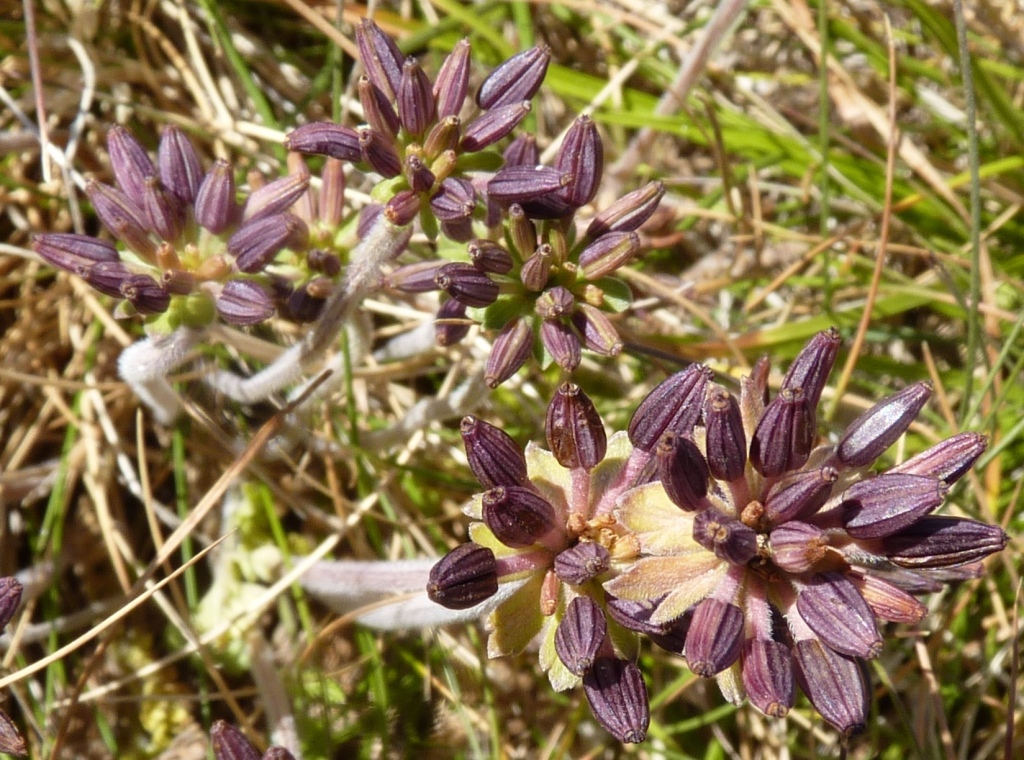Oreomyrrhis
Tufted biennial, triennial or perennial herbs, mostly monocarpic (dying after flowering/fruiting), often with fleshy taproot. Leaves in a basal rosette (cauline leaves usually absent), pinnatisect (rarely entire), linear, lanceolate to deltoid in outline; leaf-sheath conspicuous, occasionally succulent; stipules absent. Inflorescence a simple umbel (rarely compound in O. brevipes), terminal; involucral bracts connate at base, lanceolate, oblanceolate to ovate, shorter than fruit. Flowers bisexual; sepals small to absent; petals oblong to ovate, apex inflexed; nectary conical, continuous with base of styles; carpels 2. Fruit narrow-oblong to ovate, slightly flattened laterally; mericarps prominently 5-ribbed; carpophore bifid or split to base..
About 23 species, in Borneo, Taiwan, New Guinea, Australia, New Zealand and Central and South America; 7 species in Australia, all endemic to the south-east.
Oreomyrrhis has been incorporated into the larger, northern-hemisphere genus Chaerophyllum on the basis of nuclear and chloroplast DNA analysis (Chung 2007). In that study, the southern species grouped closely together and apart from most of the largely Eurasian species. A few intervening species are North American and their placement is equivocal. The southern species are united morphologically by a distinctly rosetted mostly unbranched habit with simply umbellate inflorescences and a typically monocarpic life-history, whereas species of Chaerophyllum sens. str. are mostly non-rosetted, conventional annuals or perennials, often branching and with compound umbellate inflorescences. Oreomyrrhis is retained here.
 Spinning
SpinningSynonyms
Chung, K.F. (2007). Inclusion of the South Pacific alpine genus Oreomyrrhis (Apiaceae) in Chaerophyllum based on nuclear and chloroplast DNA sequences. Systematic Botany 32(3): 671–681.

